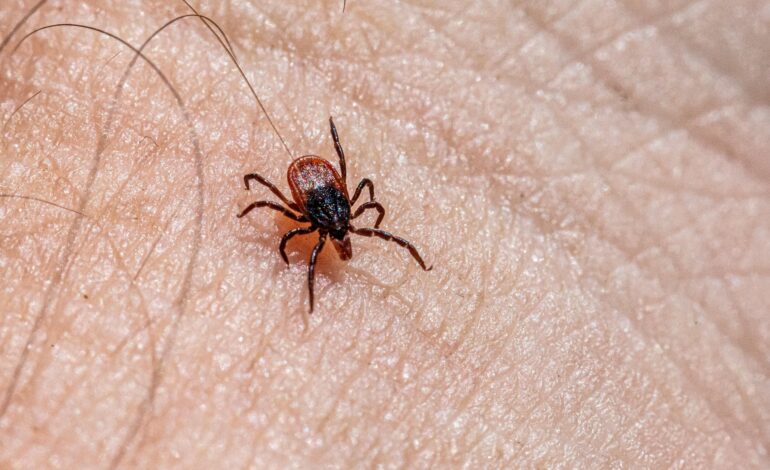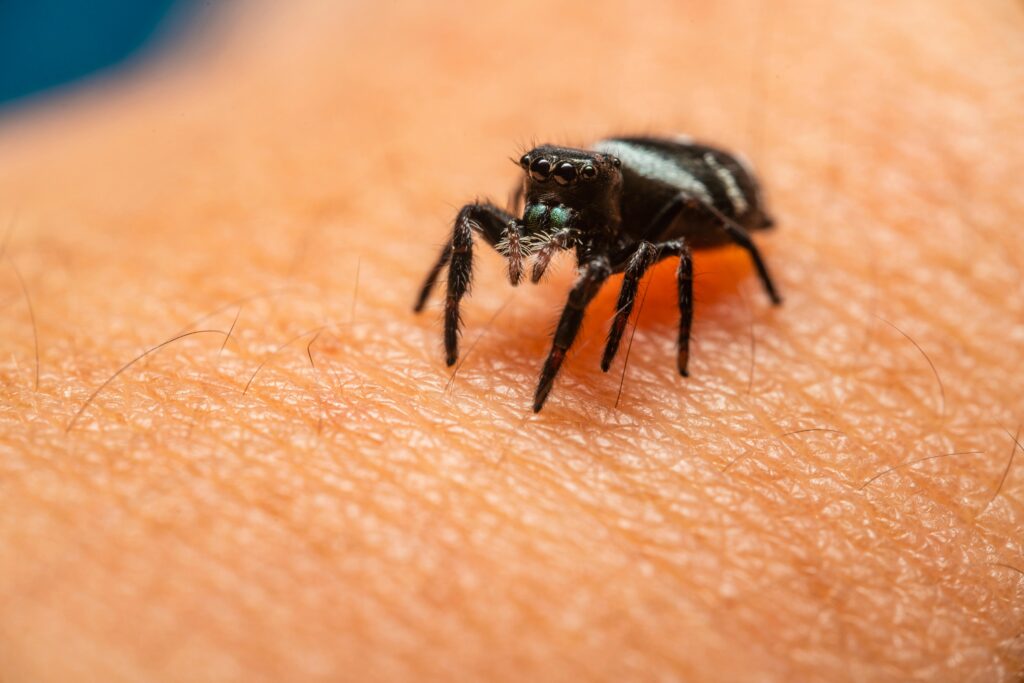Ticked Off: When a Tick Bite Becomes a Health Emergency”
Let me tell you something most people don’t want to hear: a tiny tick bite can upend your entire life. I learned this the hard way—deep in the woods of

Let me tell you something most people don’t want to hear: a tiny tick bite can upend your entire life.
I learned this the hard way—deep in the woods of upstate New York, I came out of a weekend hike with what looked like a tiny freckle on the back of my knee. Harmless, right? Just nature doing its thing. But that freckle turned out to be a tick, and within days, my body was sending distress signals I didn’t understand.
Tick bites aren’t just annoying—they can be dangerous, especially if they go unnoticed or untreated. From Lyme disease to Rocky Mountain spotted fever and anaplasmosis, the complications are real, and timing is everything when it comes to treatment.
Here’s what you need to know—when to worry, what symptoms to watch for, and what could happen if you ignore the bite.
What Happens When a Tick Bites You?
Ticks are small parasitic arachnids that latch onto your skin to feed on blood. They’re sneaky. You usually don’t feel the bite when it happens. Most tick bites are harmless—but some carry serious bacteria, viruses, or parasites that get transmitted during feeding.
Common diseases caused by tick bites include:
- Lyme disease
- Rocky Mountain spotted fever
- Anaplasmosis
- Babesiosis
- Ehrlichiosis
- Tularemia
Each of these diseases can cause complications ranging from mild flu-like symptoms to long-term neurological and cardiovascular issues if left untreated.
When to Be Concerned After a Tick Bite
Not all tick bites are dangerous. But if you experience any of the following symptoms within days or even weeks of a bite, seek medical care immediately:
- A bullseye-shaped rash (classic early sign of Lyme disease)
- Fever, chills, or night sweats
- Joint or muscle pain
- Swollen lymph nodes
- Headache or stiff neck
- Unexplained fatigue
- Numbness, tingling, or shooting nerve pain
- Irregular heartbeat or shortness of breath
Even if you never see a rash, these symptoms can point to a tick-borne illness. It’s crucial to pay attention to your body.
Lyme Disease: The Silent Complicator

Lyme disease is the most common tick-borne illness in North America and parts of Europe. It’s caused by the Borrelia burgdorferi bacteria and is typically spread by black-legged ticks (deer ticks).
Lyme Disease Complications: What Can Go Wrong?
If diagnosed early, Lyme disease is usually treatable with antibiotics. But when it’s missed or ignored, late-stage Lyme can wreak havoc on multiple systems in the body.
1. Chronic Joint Pain (Lyme Arthritis)
Up to 60% of people with untreated Lyme disease develop intermittent joint swelling and pain, especially in the knees. This can resemble autoimmune conditions and may persist for months or years.
2. Neurological Disorders (Neuroborreliosis)
Lyme can invade the central nervous system, leading to:
- Facial paralysis (Bell’s palsy)
- Severe headaches or neck stiffness
- Tingling or numbness in the hands and feet
- Memory issues, concentration difficulties (“Lyme brain”)
- Anxiety, mood changes, or depression
3. Cardiac Complications (Lyme Carditis)
Lyme bacteria can affect the heart’s electrical system, causing:
- Irregular heartbeat
- Dizziness or fainting
- Chest pain
- Shortness of breath
Though rare, this condition can be life-threatening if not treated.
4. Post-Treatment Lyme Disease Syndrome (PTLDS)
Some individuals experience lingering symptoms after antibiotic treatment ends, including:
- Chronic Disease fatigue
- Cognitive fog
- Muscle aches
- Sleep disruption
This syndrome remains poorly understood but can significantly impair quality of life.
Other Tick-Borne Illnesses: The Lesser-Known Threats
Rocky Mountain Spotted Fever (RMSF)
Without prompt treatment, RMSF can be fatal. It causes:
- High fever
- Rash that starts on wrists and ankles
- Organ damage
- Blood vessel inflammation
Anaplasmosis & Ehrlichiosis
These bacterial infections can cause:
- Severe flu-like symptoms
- Low white blood cell counts
- Respiratory distress
- Confusion or mental fog
Elderly individuals or those with weakened immune systems are most at risk for serious complications.
What to Do Right After a Tick Bite
- Remove the tick carefully using fine-tipped tweezers. Pull steadily without twisting.
- Clean the area with soap and antiseptic.
- Save the tick in a sealed bag for possible lab testing.
- Watch for symptoms for up to 30 days. Keep a symptom journal.
- Consider a preventive antibiotic (e.g. doxycycline) if recommended by your doctor.
Read About: The Silent Struggle: What Lyme Disease Steals From You — And How to Fight Back
Is There Any Way to Prevent Tick-Borne Illness?
Absolutely. Prevention is your best defense:
- Wear long sleeves, pants, and light-colored clothing when in nature
- Use EPA-approved tick repellents like DEET or permethrin
- Avoid tall grasses, brush, and wooded areas when possible
- Do full-body tick checks after being outdoors
- Check pets—they can carry ticks indoors
- Shower soon after outdoor activities
Don’t Brush Off the Bite
Ticks may be small, but the illnesses they carry can be devastating. I got lucky—I caught my symptoms early and got the treatment I needed. But not everyone is so fortunate.
If you’ve been bitten by a tick, don’t ignore it. Even if the bite seems minor, even if there’s no rash. Because when it comes to tick-borne diseases—what you don’t know really can hurt you.
When in doubt, see a doctor. Ask for testing. Push for answers.
Because prevention is powerful. But awareness? That can be lifesaving.
By Steven Grillo for Ravoke.com








